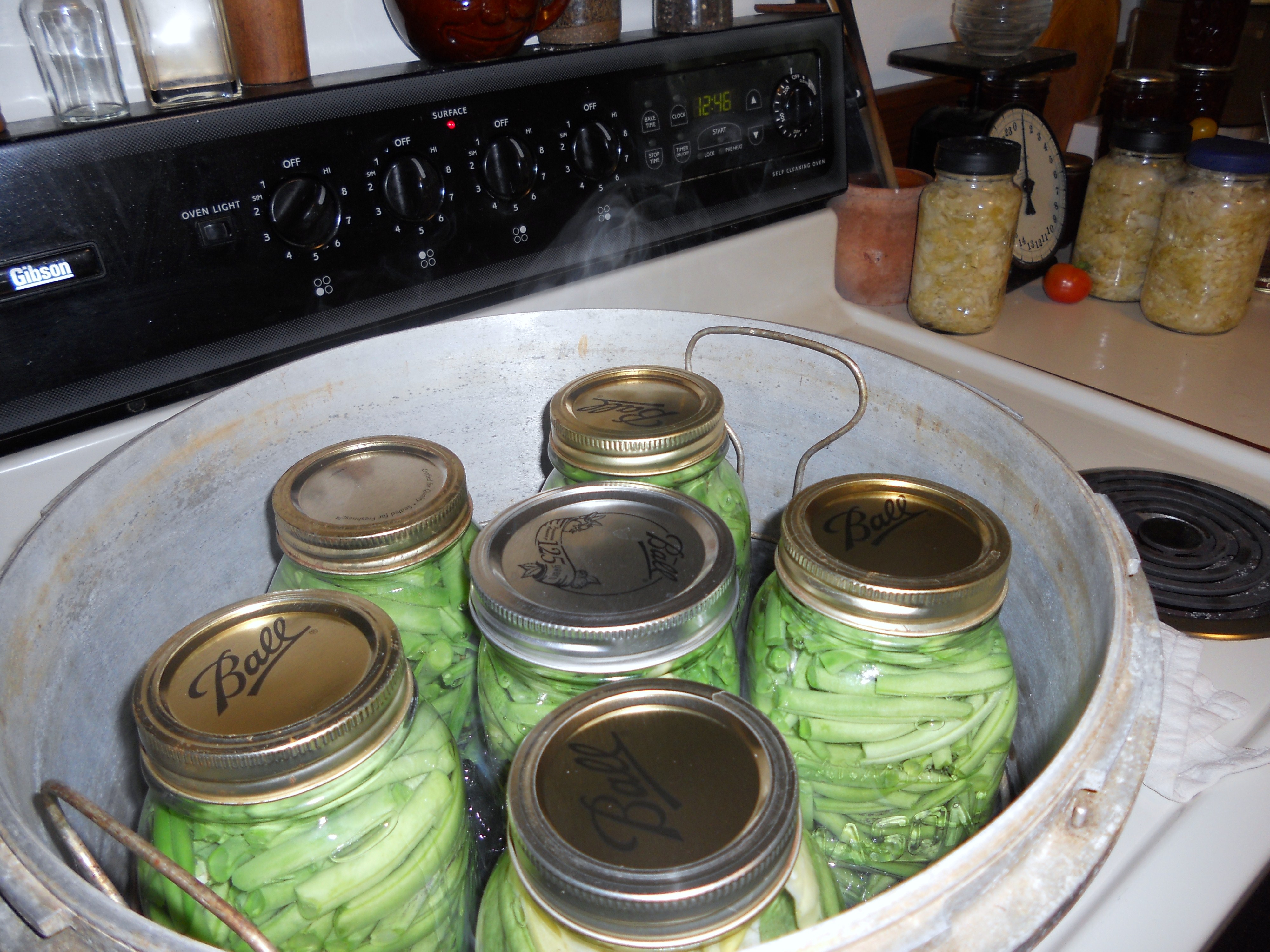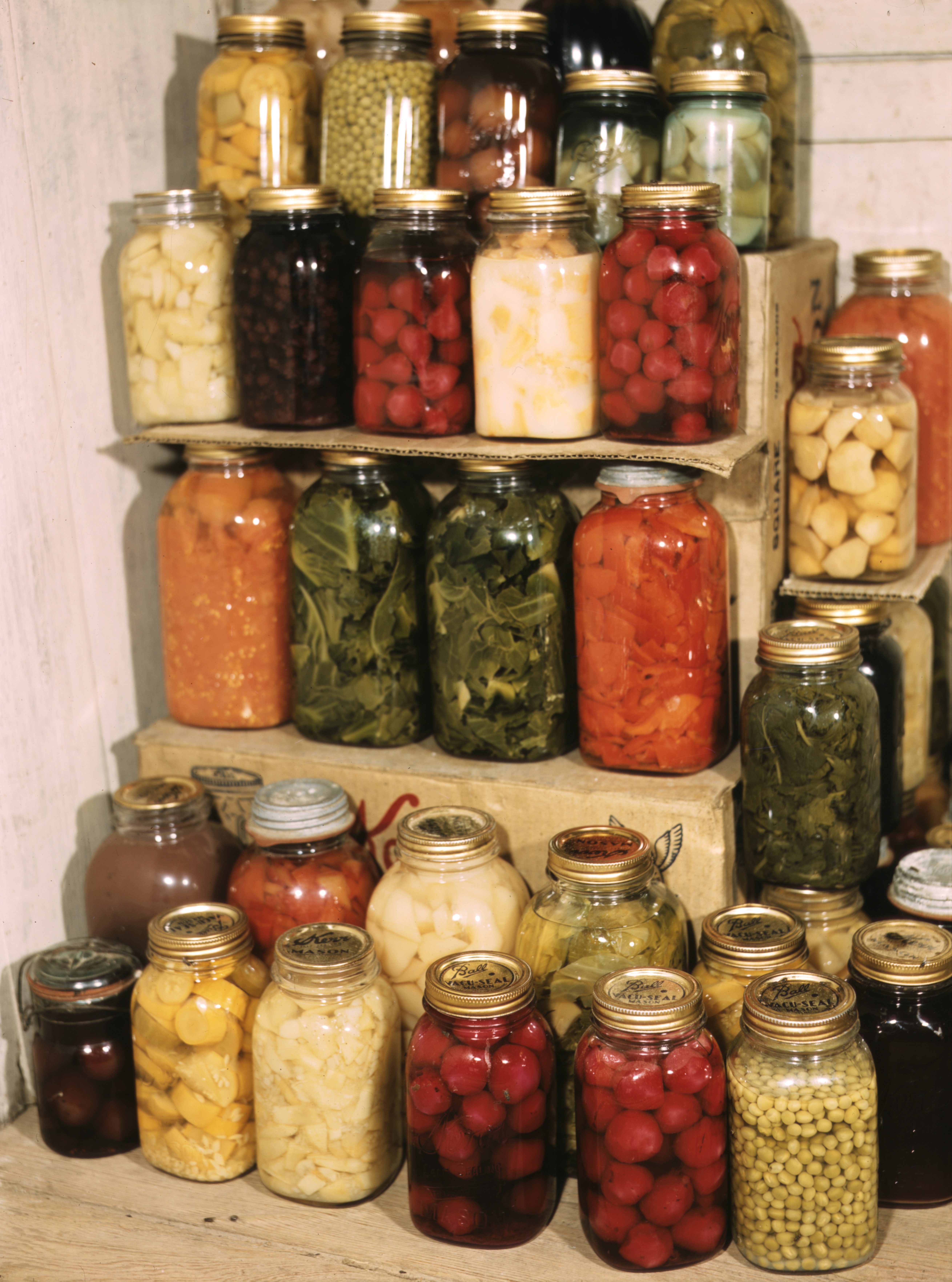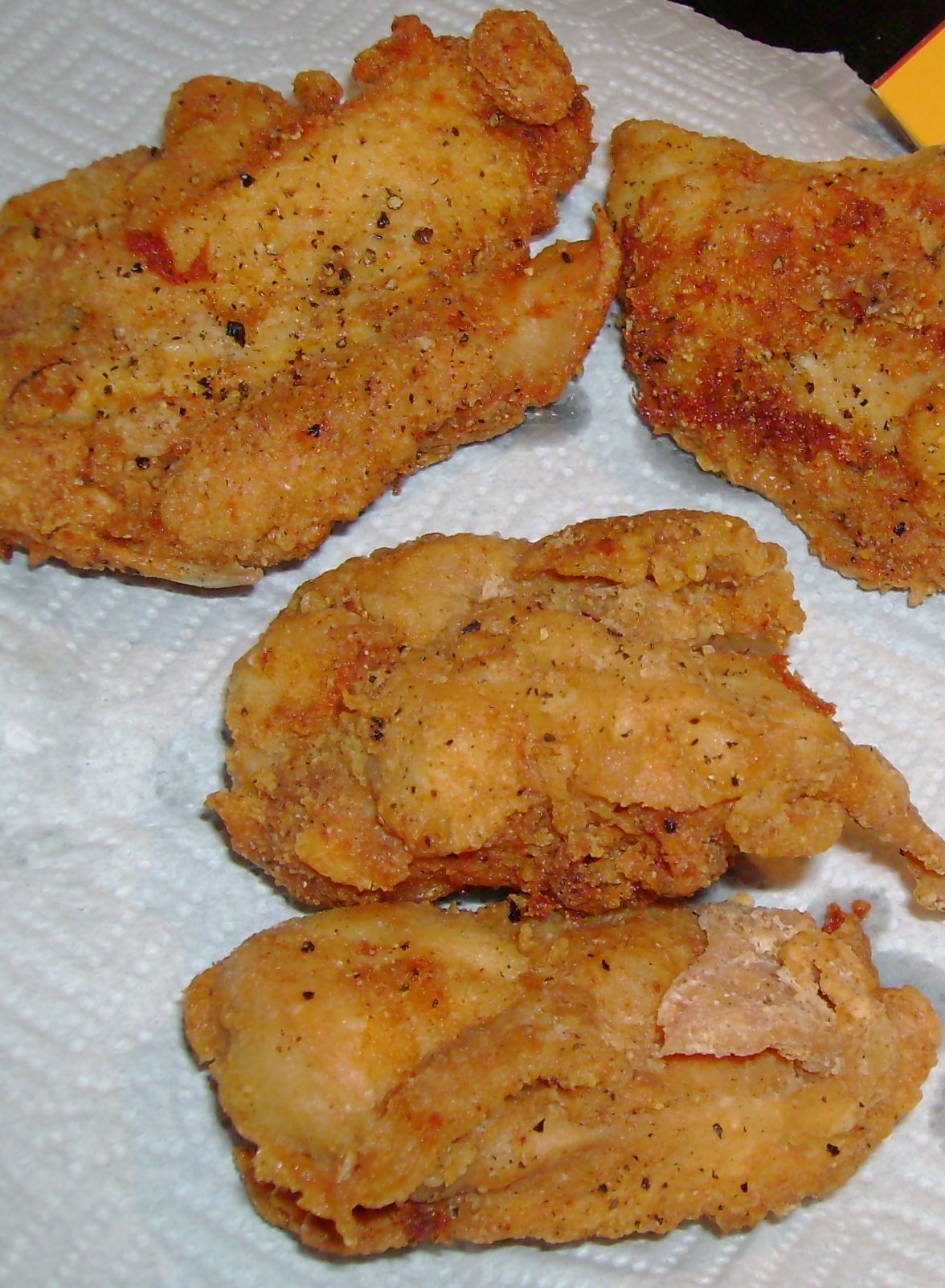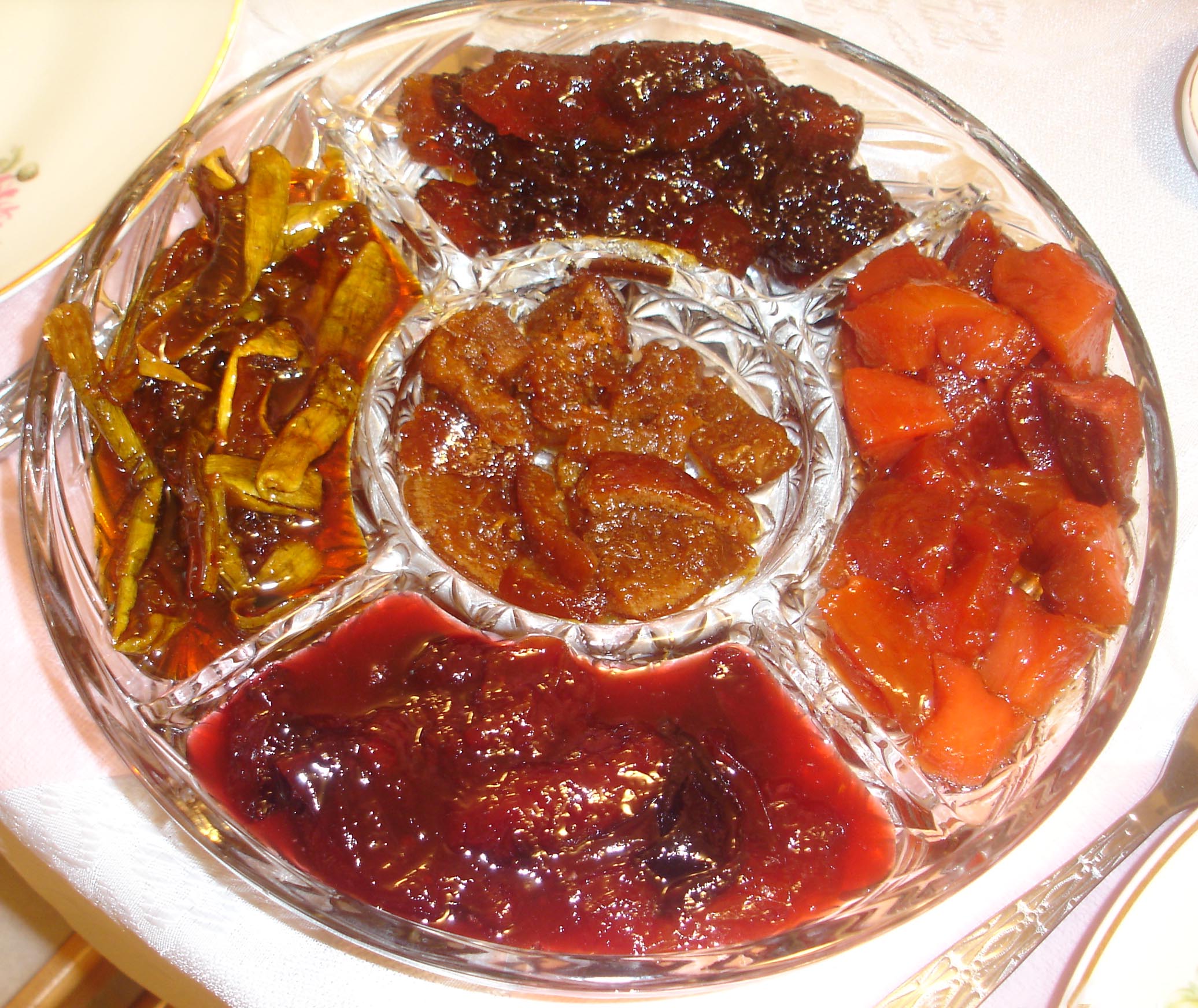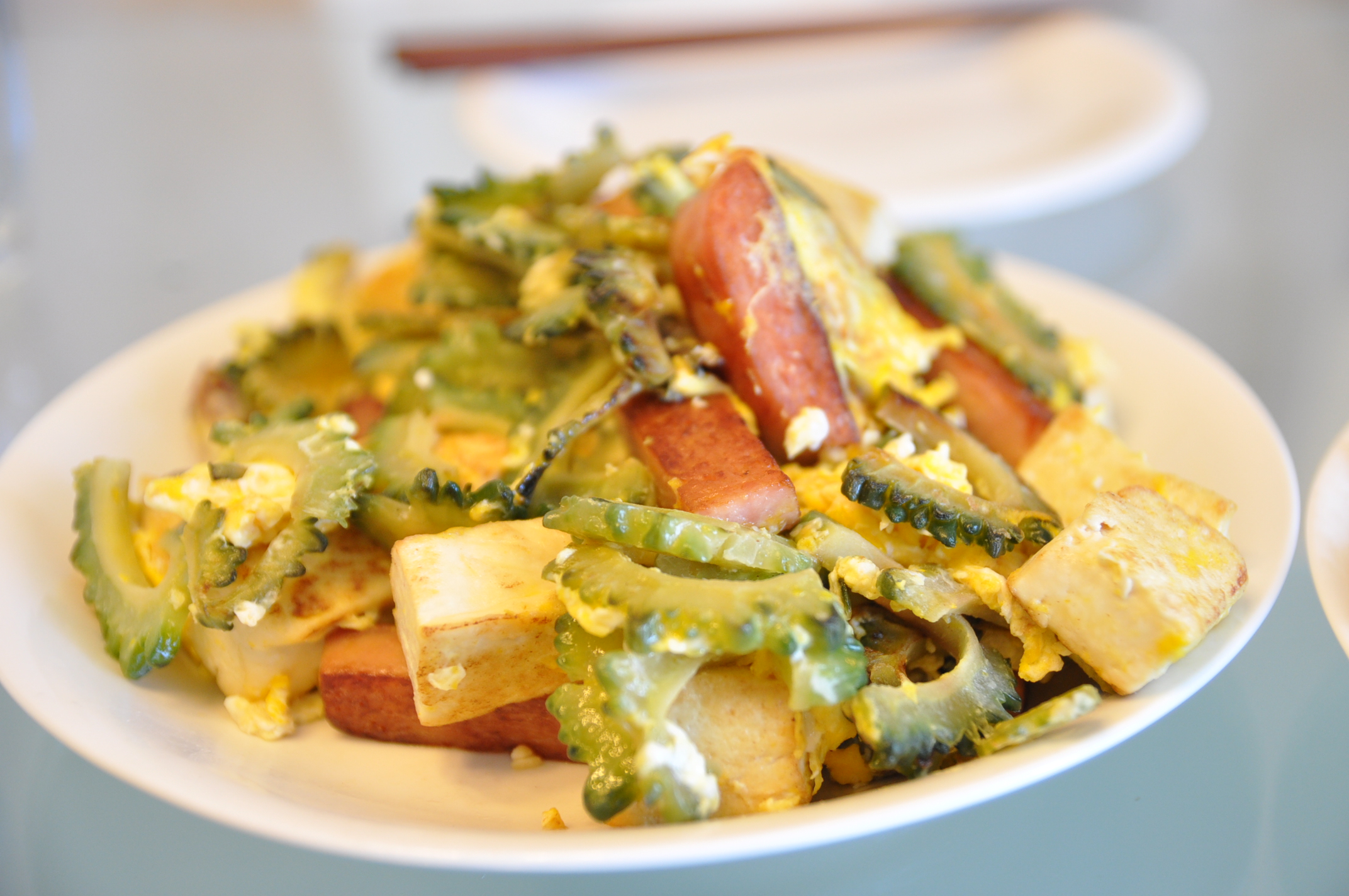|
Watermelon Rind Preserves
Watermelon rind preserves are made by boiling chunks of watermelon rind with sugar and other ingredients. The mixture is then canned in glass jars. According to some recipes, the rind is pared to only the white portion, strips or cubes of which are soaked overnight in a solution of lime or salt and water, then rinsed. It is then boiled, combined with sugar and flavorings such as ginger and lemon, and cooked until the rind is clear. In the United States, these preserves are typical of Southern cuisine. A Serbian variety is called slatko od lubenice. See also *Fruit preserves Fruit preserves are preparations of fruits whose main preserving agent is sugar and sometimes acid, often stored in glass jars and used as a condiment or spread. There are many varieties of fruit preserves globally, distinguished by the meth ... * List of melon dishes References Condiments Cuisine of the Southern United States Serbian cuisine Watermelon dishes {{condiment-stub ... [...More Info...] [...Related Items...] OR: [Wikipedia] [Google] [Baidu] |
Watermelon
The watermelon (''Citrullus lanatus'') is a species of flowering plant in the family Cucurbitaceae, that has a large, edible fruit. It is a Glossary of botanical terms#scandent, scrambling and trailing vine-like plant, and is plant breeding, widely cultivated worldwide, with more than 1,000 variety (botany), varieties. Watermelons are grown in favorable climates from tropics, tropical to temperate climate, temperate regions worldwide for its large edible fruit, which is a Berry (botany), berry with a hard rind and no internal divisions, and is botany, botanically called a Glossary of botanical terms#pepo, ''pepo''. The sweet, juicy flesh is usually deep red to pink, with many black seeds, although seedless fruit, seedless varieties exist. The fruit can be eaten raw or pickled, and the rind is edible after cooking. It may also be consumed as a juice or an ingredient in mixed beverages. Kordofan melons from Sudan are the closest relatives and may be progenitors of modern, cul ... [...More Info...] [...Related Items...] OR: [Wikipedia] [Google] [Baidu] |
Home Canning
Home canning or bottling, also known colloquially as putting up or processing, is the process of Food preservation, preserving foods, in particular, fruits, vegetables, and meats, by packing them into glass jars and then heating the jars to create a vacuum seal and kill the organisms that would create spoilage. Though ceramic and glass containers had been used for storage for thousands of years, the technique of canning, which involves applying heat for preservation, was only invented in the first decade of the 1800s. Before that, food storage containers were used for non-perishable foods, or with preservatives such as salt, sugar, vinegar, or alcohol. Techniques The two methods of home canning are ''water bath canning'' and ''pressure canning''. Both involve placing the food inside special glass canning jars and then heating the contents. Home canning glass jars are Annealing (glass), annealed during manufacture to increase their ability to withstand temperature changes and me ... [...More Info...] [...Related Items...] OR: [Wikipedia] [Google] [Baidu] |
Mason Jar
A Mason jar, also known as a canning jar, preserves jar or fruit jar, is a glass jar used in home canning to food preservation, preserve food. It was named after American tinsmith John Landis Mason, who patented it in 1858. The jar's mouth has a screw thread on its outer perimeter to accept a metal ring or "band". The band, when screwed down, presses a separate Stamping (metalworking), stamped steel disc-shaped lid (container), lid against the jar's rim. After Mason's patent expired, numerous other companies began manufacturing similar jars. Over the years, the Brand, brand name ''Mason'' became the Generic trademark, genericized trademark for that style of glass home canning jar, and the word "Mason" can be seen on many Ball Corporation, Ball and Kerr brand jars. The style of jar is occasionally referred to by common brand names such as Ball jar (in the eastern US) or Kerr jar (in the western US) even if the individual jar is not that brand. In early 20th-century United States, ... [...More Info...] [...Related Items...] OR: [Wikipedia] [Google] [Baidu] |
Ginger
Ginger (''Zingiber officinale'') is a flowering plant whose rhizome, ginger root or ginger, is widely used as a spice and a folk medicine. It is an herbaceous perennial that grows annual pseudostems (false stems made of the rolled bases of leaves) about one meter tall, bearing narrow leaf blades. The inflorescences bear flowers having pale yellow petals with purple edges, and arise directly from the rhizome on separate shoot (botany), shoots. Ginger is in the family (taxonomy), family Zingiberaceae, which also includes turmeric (''Curcuma longa''), cardamom (''Elettaria cardamomum''), and galangal. Ginger originated in Maritime Southeast Asia and was likely domesticated first by the Austronesian peoples. It was transported with them throughout the Indo-Pacific during the Austronesian expansion ( Before Present, BP), reaching as far as Hawaii. Ginger is one of the first spices to have been exported from Asia, arriving in Europe with the spice trade, and was used by ancient Gre ... [...More Info...] [...Related Items...] OR: [Wikipedia] [Google] [Baidu] |
Lemon
The lemon (''Citrus'' × ''limon'') is a species of small evergreen tree in the ''Citrus'' genus of the flowering plant family Rutaceae. A true lemon is a hybrid of the citron and the bitter orange. Its origins are uncertain, but some evidence suggests lemons originated during the 1st millennium BC in what is now northeastern India. Some other citrus fruits are called ''lemon''. The yellow fruit of the lemon tree is used throughout the world, primarily for its juice. The pulp and rind are used in cooking and baking. The juice of the lemon is about 5–6% citric acid, giving it a sour taste. This makes it a key ingredient in drinks and foods such as lemonade and lemon meringue pie. In 2022, world production was 22 million tonnes, led by India with 18% of the total. Description The lemon tree produces a pointed oval yellow fruit. Botanically this is a hesperidium, a modified berry with a tough, leathery rind. The rind is divided into an outer colored layer or ... [...More Info...] [...Related Items...] OR: [Wikipedia] [Google] [Baidu] |
United States
The United States of America (USA), also known as the United States (U.S.) or America, is a country primarily located in North America. It is a federal republic of 50 U.S. state, states and a federal capital district, Washington, D.C. The 48 contiguous states border Canada to the north and Mexico to the south, with the semi-exclave of Alaska in the northwest and the archipelago of Hawaii in the Pacific Ocean. The United States asserts sovereignty over five Territories of the United States, major island territories and United States Minor Outlying Islands, various uninhabited islands in Oceania and the Caribbean. It is a megadiverse country, with the world's List of countries and dependencies by area, third-largest land area and List of countries and dependencies by population, third-largest population, exceeding 340 million. Its three Metropolitan statistical areas by population, largest metropolitan areas are New York metropolitan area, New York, Greater Los Angeles, Los Angel ... [...More Info...] [...Related Items...] OR: [Wikipedia] [Google] [Baidu] |
Cuisine Of The Southern United States
The cuisine of the Southern United States encompasses diverse food traditions of several subregions, including Indigenous cuisine of the Americas, cuisine of Indigenous peoples of the Southeastern Woodlands, Southeastern Native American tribes, Tidewater (region), Tidewater, Appalachian cuisine, Appalachian, Ozarks, Lowcountry cuisine, Lowcountry, Cajun cuisine, Cajun, Louisiana Creole cuisine, Creole, Soul food, African American cuisine and Floribbean, Spanish cuisine, Spanish, French cuisine, French, British cuisine, British, Ulster-Scots and German cuisine, German cuisine. In recent history, elements of Southern cuisine have spread to other parts of the United States, influencing other types of Cuisine of the United States, American cuisine. Many elements of Southern cooking—tomatoes, Squash (plant), squash, maize, corn (and its derivatives, such as hominy and grits), and Pit barbecue, deep-pit barbecuing—are borrowings from Indigenous peoples of the region (e.g., Cherokee ... [...More Info...] [...Related Items...] OR: [Wikipedia] [Google] [Baidu] |
Serbia
, image_flag = Flag of Serbia.svg , national_motto = , image_coat = Coat of arms of Serbia.svg , national_anthem = () , image_map = , map_caption = Location of Serbia (green) and the claimed but uncontrolled territory of Kosovo (light green) in Europe (dark grey) , image_map2 = , capital = Belgrade , coordinates = , largest_city = capital , official_languages = Serbian language, Serbian , ethnic_groups = , ethnic_groups_year = 2022 , religion = , religion_year = 2022 , demonym = Serbs, Serbian , government_type = Unitary parliamentary republic , leader_title1 = President of Serbia, President , leader_name1 = Aleksandar Vučić , leader_title2 = Prime Minister of Serbia, Prime Minister , leader_name2 = Đuro Macut , leader_title3 = Pres ... [...More Info...] [...Related Items...] OR: [Wikipedia] [Google] [Baidu] |
Slatko
Slatko (; ; ; meaning "sweet") is a thin fruit preserve made of fruit or rose petals in Bulgarian, Macedonian, and Serbian cuisine. Almost any kind of fruit can be used, including wild strawberry, blueberry, plum or cherry. Traditions Traditionally, all guests in Serbian and Bulgarian homes are greeted with a spoonful of ''slatko/sladko'' and a cup of water immediately after being seated. Particularly honoured guests are offered twice, although any guest can ask for another taste, to honour the housekeeper. For the second taste another spoon must be used. To ask for the third taste, if not offered, is regarded as an improper behaviour, although usually granted. Alternatively, in the same manner, the guests may be offered honey (or asked to choose between the two). Prior to the creation of Yugoslavia, the tradition of slatko was common and widespread only in the historical Serbia, south of Sava and Danube, and was unknown in Vojvodina or other parts of Austro-Hungarian Empire. ... [...More Info...] [...Related Items...] OR: [Wikipedia] [Google] [Baidu] |
Fruit Preserves
Fruit preserves are preparations of fruits whose main preserving agent is sugar and sometimes acid, often stored in glass jars and used as a condiment or spread. There are many varieties of fruit preserves globally, distinguished by the method of preparation, type of fruit used, and its place in a meal. Sweet fruit preserves such as jams, jellies, and marmalades are often eaten at breakfast with bread or as an ingredient of a pastry or dessert, whereas more savory and acidic preserves made from " vegetable fruits" such as tomato, squash or zucchini, are eaten alongside savory foods such as cheese, cold meats, and curries. Techniques There are several techniques of making jam, with or without added water. One factor depends on the natural pectin content of the ingredients. When making jam with low-pectin fruits like strawberries, high-pectin fruit like orange can be added, or additional pectin in the form of pectin powder, citric acid or citrus peels. Often the fruit will b ... [...More Info...] [...Related Items...] OR: [Wikipedia] [Google] [Baidu] |
List Of Melon Dishes
This is a list of melon dishes and foods that use melon as a primary ingredient. A melon is any of various plants of the family Cucurbitaceae with edible, fleshy fruit. The word "melon" can refer to either the plant or specifically to the fruit. Melon dishes and foods * Bogobe jwa lerotse – porridge prepared using the lerotse melon * Egusi – fat- and protein-rich seeds of certain Cucurbitaceae, cucurbitaceous (melon, squash, gourd) plants. Egusi soup is thickened with egusi. Egusi sauce is prepared using egusi. *Gelo di melone, Gelu di Muluni – Sicilian dessert of ground watermelon flesh cooked with starch and sugar then cooled to solidify, topped with jasmine, candied fruit bits, pistachios and cinnamon. * chanpurū, Gōyā chanpurū – type of chanpurū that is a popular and widely recognized dish in the Okinawan cuisine of the island of Okinawa Island, Okinawa, Japan. It is a stir fry of bitter melon, tofu, egg and sliced pork or Spam (food), Spam. * Melon ball – bal ... [...More Info...] [...Related Items...] OR: [Wikipedia] [Google] [Baidu] |

